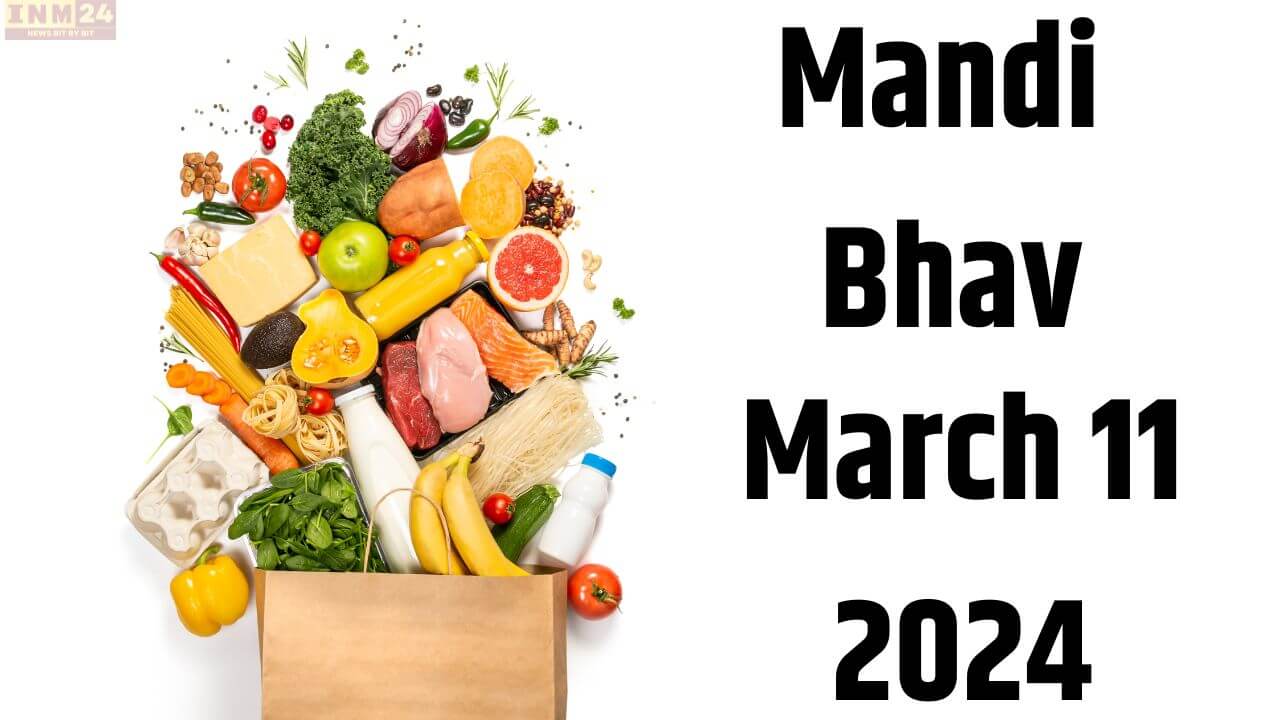The agricultural and vegetable markets witness daily fluctuations in prices based on both national and international factors. After being harvested from the fields, these commodities traverse the significant markets and eventually reach various state-specific mandis. The prices of grains and vegetables in these mandis are determined based on the prevailing rates in larger markets.
In this report, we bring you the latest and accurate price trends from the Indore Mandi as of March 11, 2024. Daily changes in the rates of grains and vegetables, including the notable increase in Moong prices, are highlighted.
Indore Mandi Price Trends
The Indore Mandi has experienced consistent changes in the prices of grains and vegetables. Today, once again, there is a significant upward trend in the rates of wheat and soybean. Both commodities have seen an increase of approximately 200 rupees compared to the previous day. The prices of Dollar Chana, Desi Chana, and Chana Kanta are also steadily rising, with Dollar Chana approaching the 8,000 mark, while Desi Chana has reached 6,000. Chana Kanta is currently priced at 5,000.
Moong, on the other hand, has witnessed a remarkable surge, reaching beyond the 10,000 mark and settling at 10,200. Although there is a noticeable increase in Masoor prices, it remains relatively stable. The rates for various vegetables and fruits have not shown significant variations. The mandi bhav for March 11, 2024, is provided below:
Mandi Bhav (Selected Rates)
Grains
- Soybean: 3,300 to 4,700
- Wheat: 3,000 to 2,700
- Gehun Sujata: 3,800
- Makka: 4,200
- Dollar Chana: 7,800 to 11,500
- Desi Chana: 6,000 to 6,556
- Chana Kanta: 5,000 to 6,466
- Masoor: 7,200
Pulses
- Moong: 10,200
- Moong Average: 5,800 to 5,500
- Tur: 8,300 to 8,200
- Tur Safed Maharashtra: 6,800 to 7,275
- Tur Karnataka: 6,200 to 7,230
- Nimari Tur: 6,000 to 7,330
Oilseeds
- Sarson: 6,400
- Sarson Nimari: 4,800 to 5,060
- Urad Bold: 6,400
- Urad Medium: 5,200
- Halka Urad: 3,900 to 2,100
Vegetables
- Apple: 2,200 to 10,000
- Kela: 600 to 1,200
- Tamatar: 500 to 1,100
- Kaddu: 600 to 1,000
- Kheera: 500 to 1,200
- Karela: 400 to 1,400
- Lauki: 400 to 4,800
- Baingan: 300 to 700
- Phul Gobi: 700 to 1,600
- Adrak: 500 to 11,560
- Hari Mirch: 400 to 2,200
- Patta Gobi: 400 to 700
- Sahjan: 500 to 2,000
- Dhaniya: 600 to 2,000
- Shimla Mirch: 400 to 3,000
Onions
- Extra Super Pyaaz: 4,500
- Super Pyaaz: 1,200 to 1,400
- Average Pyaaz: 900 to 1,100
Potatoes
- Extra Super Aloo: 1,600
- Gulla Aloo: 900 to 1,200
- Jyoti Aloo: 1,400 to 1,600
- Chipsona Aloo: 1,000 to 1,370
- Chhantn Aloo: 900 to 1,200
Garlic
- Extra Super Lahsun: 24,500 to 28,000
- Super Lahsun: 18,000 to 19,000
- Average Lahsun: 16,000 to 17,000
- Medium Lahsun: 14,000 to 15,000
- Halki Lahsun: 5,100 to 11,000
The Mandi Bhav report for March 11, 2024, reflects the dynamic nature of agricultural and vegetable prices in the Indore Mandi. Farmers, traders, and consumers can stay informed about the latest trends in commodity prices to make well-informed decisions in this ever-evolving market.
